Mini Facelift
Offered at our convenient location in Denver
The mini facelift, also known as a short scar or minimum incision facelift, is a cosmetic surgical procedure that uses limited incisions to lift and tighten the skin and underlying muscles in the lower face and neck area. The procedure addresses the superficial musculoaponeurotic system (SMAS). This is the network of tissue that connects the many layers of the facial tissues beneath the skin. During a mini facelift, this is tightened to restore the lower midface and eliminate jowls. This procedure can also improve the midface and upper neck using shorter incisions than traditional facelifts. The mini facelift has recently gained popularity due to its shorter operative time, lower cost, faster recovery, fewer complications, and less visible scarring.
At Millard Plastic Surgery in Englewood, CO, we are proud to offer mini facelifts at the hands of a skilled plastic surgeon. With over 30 years of experience, Dr. David Hendrick holds triple board certification from the American Board of Cosmetic Surgery, the American Board of Facial Plastic and Reconstructive Surgery, and the American Board of Otolaryngology. Patients in Colorado have the privilege of entrusting their cosmetic work to a highly qualified and accomplished surgeon. Start your journey today by calling for a consultation. In Denver and the surrounding areas, call (303) 792-5665, and we will be happy to book your appointment.
Patients are invited to visit our blog to learn more about our practice and the procedures and treatments we offer to help you look your best!
Contents
- 1 About The Mini Facelift
- 2 What are the Benefits of a Mini Facelift?
- 3 Ideal Candidates
- 4 Personal Consultation
- 5 Preparation Steps for Your Surgery
- 6 The Mini Facelift Procedure
- 7 Recovery After Surgery
- 8 What are the Results of a Mini Facelift?
- 9 What is the Cost of a Mini Facelift in Denver?
- 10 References
About The Mini Facelift
By definition, the mini facelift provides more limited results than the traditional facelift. While many short scar facelift techniques can produce good results, there are certain limitations, particularly with the neck area. This procedure is typically recommended for younger patients with moderate mid and lower face laxity. Additionally, it can easily be combined with other less invasive methods to address submental and neck laxity.
Patients want to achieve safe and minimal invasive results without the tell-tale signs of surgery, such as altered hairlines, visible scarring, earlobe deformities, an unnatural tight appearance, and uneven facial contours. They also want to avoid prolonged recovery time and discomfort. With a skilled, triple-board-certified surgeon like Dr. Hendrick, the results can be dramatic yet natural-looking.
The Aging Face
Baker’s classification system [1] is a way to evaluate how good a candidate a person is for facelift surgery. It outlines the changes that happen to the different areas of the face as we age. However, this classification system does not consider the loss of volume in the face that can happen with aging, which changes in the skin and bones can cause.
Volume is important to consider because even if the skin is tightened, the person may still look older due to a loss of volume. In these cases, Dr. Hendrick can perform a fat transfer to replace the lost volume of the patient’s face.
What are the Benefits of a Mini Facelift?
The benefits of a mini facelift procedure can vary depending on the individual and the specific technique used, but patients can generally expect the following:
- Improved appearance of the lower face and neck – A mini facelift can help to tighten and smooth the skin in the lower face and neck area, reducing the appearance of wrinkles, sagging skin, and jowls.
- Natural-looking results – A well-performed mini facelift can produce natural results that are not overly tight or pulled.
- Shorter recovery time – A mini facelift generally requires less extensive surgery than a traditional facelift; recovery time is typically shorter.
- Smaller incisions – Mini facelift typically involves smaller incisions than traditional ones, resulting in less visible scarring.
- Lower cost – Mini facelift is typically less expensive than a traditional facelift.
- Lower risk of complications – Mini facelift carries a reduced risk of wound complications and hematomas.
Ideal Candidates
The ideal candidate for a mini facelift is typically a younger patient with minimal signs of photoaging and fine wrinkles. Patients should be in good health and have mild to moderate excess fat and cheek and neck laxity. A mini facelift can address the mild prominence of nasolabial folds and downward drooping jowls. These candidates are often under 55, but that is not a hard and fast rule.
Some people are not good candidates for a mini facelift because of age, but also because of skin conditions or other physical characteristics. For example, people with thin, saggy skin and wrinkles may require a traditional facelift with full-length incisions. Similarly, people with severely sagging skin and deep wrinkles on their lower face and neck may also be better suited to the facelift procedure. The best way to determine your candidacy for this or any other Millard Plastic Surgery procedure is by scheduling a consultation.
Personal Consultation
A mini facelift consultation is a meeting between the patient and surgeon to discuss your goals for surgery and a chance to determine if you are a good candidate for this procedure.
During the consultation, Dr. Hendrick will:
- Examine your face and neck
- Take photographs and measurements
- Discuss your medical history and current health status
He will also explain the different types of mini facelift approaches, complementary procedures, the expected outcomes, the risks and complications, and the recovery process. Dr. Hendrick will also discuss your expectations and help you set realistic surgery goals. During the consultation, you are welcome to ask questions and express concerns.
We are here to help you feel confident in your decision! Call (303) 792-5665 to get started, or fill out this form, and we will return your call shortly.
Preparation Steps for Your Surgery
Before surgery, Dr. Hendrick may require certain tests to be performed. He will advise you on which medications to stop, such as blood thinners, in the weeks leading up to the surgery. If patients smoke, they should stop temporarily, as smoking can impede the healing process. Alcohol consumption should also be avoided.
Patients should arrange transportation to and from the surgery and post-operative care, such as help with daily activities and dressings if required. Patients should be mentally and emotionally prepared for the surgery and have realistic expectations. The healing process may bring up feelings that your face will never look better, but you must trust the process!
All necessary consent forms will be reviewed and signed, and the patient will be given a prescription for antibiotics and pain medication to take after the procedure. It’s important to follow our instructions and have an open and honest conversation with Dr. Hendrick about any questions or concerns that come up.
The Mini Facelift Procedure
Before the surgery, the doctor will mark some important parts of the face, such as the path of the nerve that controls the muscles in the forehead, how much skin will be lifted, and where the incisions will be made. These landmarks will guide the doctor during the surgery. For younger patients, the hairline incision is unnecessary; the incision ends at the base of the earlobes. This helps to minimize scarring and ensure natural-looking results.
The patient will be given anesthesia according to their choice and the surgical indication. The mini facelift can be performed using local anesthesia with IV sedation, or general anesthesia.
Dr. Hendrick will make a small incision around the ear, and its length will depend on the patient’s specifics.
Just because the incision used in facelift surgery is small, it does not mean that the amount of work done on the deeper layers of tissue is limited. [2] The overlying skin will be separated from the underlying tissue so that the SMAS can be tightened, and lifted to a more youthful position. [3] The overlying skin is then redraped and smoothed, and any excess skin is trimmed away. Once the surgery is complete, Dr. Henrick will close the incisions and apply bandages around the face and head to minimize swelling and support the tissues as they heal. The patient will be observed until it is safe to go home and begin recovery.
Recovery After Surgery
Swelling and bruising are normal after a mini facelift and typically peak on the second or third day post-surgery. They may be some mild to moderate discomfort, which can be managed with medication prescribed by the surgeon. Numbness and tingling around the ears can occur but is temporary, and will resolve on its own.
After about a week, you will return so Dr. Hendrick can remove your stitches. Many patients can return to work within 1-2 weeks of the surgery, although some may need more time to recover. It is important to listen to your body and rest when you feel you need it. Patients should avoid strenuous physical activities for at least two weeks after the surgery.
It’s important to follow our instructions for post-operative care, attend all follow-up appointments, and contact us at (303) 792-5665 if there are any concerns or complications.
What are the Results of a Mini Facelift?
The final results of a mini facelift typically become visible within 3-6 months as the swelling and bruising subside. The patient will slowly see time seem to turn back as the youthful contours of their face are revealed. Jowling and a sinking mid-face will now be lifted, creating natural-looking, smooth skin. Wrinkles and creases in the area that Dr. Hendricks addressed (the mid-face) will disappear.
After a mini facelift, patients will feel confident and ready to take on whatever comes their way!
What is the Cost of a Mini Facelift in Denver?
Patients interested in learning about the cost of facial rejuvenation with Dr. Hendrick should schedule a consultation. Every aspect of your procedure, recovery, and cost will be covered, so there are no surprises.
Treat yourself to the gift of a gorgeous, youthful face! Call (303) 792-5665 today.
References
- Carniol PJ, Ganc DT. Is there an ideal facelift procedure? Current Opinion in Otolaryngology & Head and Neck Surgery. 2007;15(4):244. doi:10.1097/MOO.0b013e32825a678d
- MCCARTY M, BRACKUP A. Minimal Incision Facelift Surgery. Ophthalmology Clinics of North America. 2005;18(2):305-310. doi:10.1016/j.ohc.2005.03.008
- Mitz V, Peyronie M. The superficial musculo-aponeurotic system (SMAS) in the parotid and cheek area. Plastic and Reconstructive Surgery. 1976;58(1):80-88. doi:10.1097/00006534-197607000-00013






